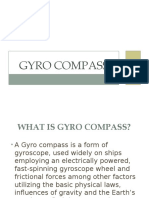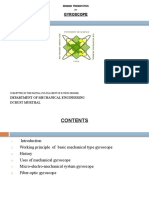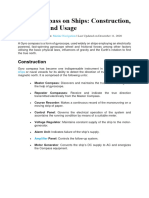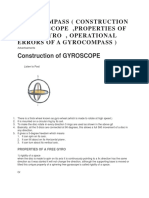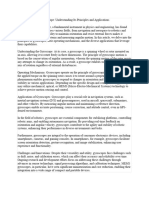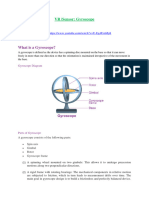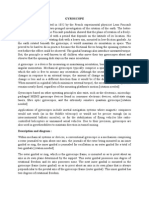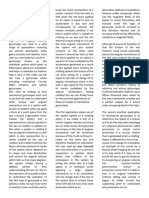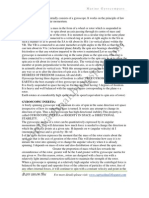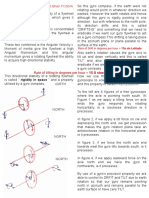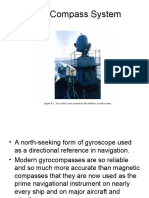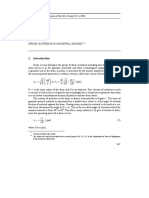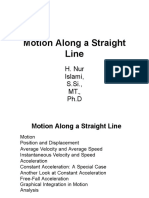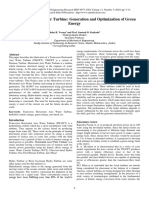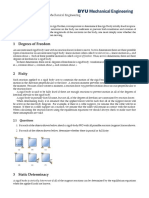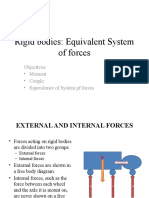0% found this document useful (0 votes)
43 views15 pagesGyro Compass and Gyroscopic Principle
The document explains the functioning and construction of a gyro compass, a navigational instrument that determines true direction using gyroscopic principles rather than magnetic fields. It details the components of the gyro compass, including the gyroscope, gimbal system, and control mechanisms, as well as the gyroscopic principle which involves conservation of angular momentum and precession. The conclusion emphasizes the importance of gyroscopes in navigation and stabilization technologies.
Uploaded by
kentonil888Copyright
© © All Rights Reserved
We take content rights seriously. If you suspect this is your content, claim it here.
Available Formats
Download as PPTX, PDF, TXT or read online on Scribd
0% found this document useful (0 votes)
43 views15 pagesGyro Compass and Gyroscopic Principle
The document explains the functioning and construction of a gyro compass, a navigational instrument that determines true direction using gyroscopic principles rather than magnetic fields. It details the components of the gyro compass, including the gyroscope, gimbal system, and control mechanisms, as well as the gyroscopic principle which involves conservation of angular momentum and precession. The conclusion emphasizes the importance of gyroscopes in navigation and stabilization technologies.
Uploaded by
kentonil888Copyright
© © All Rights Reserved
We take content rights seriously. If you suspect this is your content, claim it here.
Available Formats
Download as PPTX, PDF, TXT or read online on Scribd
/ 15






